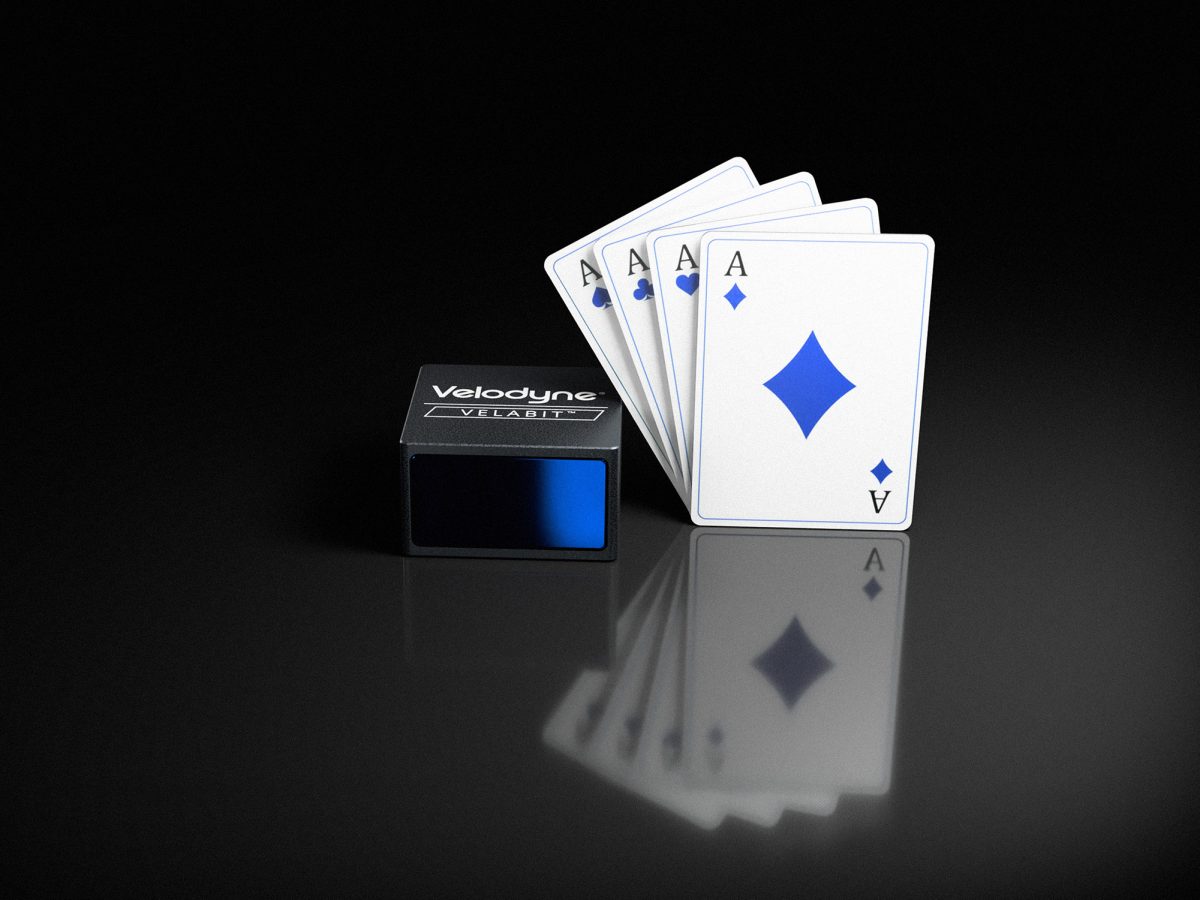Velodyne’s smallest sensor, the Velabit, offers new levels of versatility and affordability to 3D lidar perception. The Velabit leverages Velodyne’s lidar technology and manufacturing partnerships for cost optimization and high-volume production.
The Velabit sensor delivers the same technology and performance found on Velodyne’s full suite of state-of-the-art sensors and can be embedded almost anywhere within vehicles, robots, unmanned aerial vehicles (UAVs), and infrastructure. The compact sensor can be combined with other Velodyne lidar sensors, such as the Velarray, for high-speed operation or function as a standalone lidar solution in low-speed applications.
Designed for mass production, the Velabit is engineered to be an optimal automotive grade lidar solution for advanced driver assistance systems (ADAS) and autonomous vehicles. It enables robust perception coverage for blind-spot monitoring, cross traffic detection, automatic emergency braking, and pedestrian and bicyclist safety.
Features of the Velabit include:
• Integrated processing in a compact size of 2.4” x 2.4” x 1.38”.
• Range up to 100 meters.
• 60-degree horizontal FoV x 10-degree vertical FoV.
• Configurable to support a range of applications.
• Class 1 eye-safe 903 nanometer technology.
• Bottom connector with cable length options.
• Multiple manufacturing sources scheduled to be available for qualified production projects.
Anand Gopalan, CEO, Velodyne Lidar, said: “The Velabit democratizes lidar with its ultra-small form factor and its sensor pricing targeted at $100 in high-volume production, making 3D lidar available for all safety-critical applications. Its combination of performance, size and price position the Velabit to drive a quantum leap in the number of lidar-powered applications. The sensor delivers what the industry has been seeking: a breakthrough innovation that can jump-start a new era of autonomous solutions on a global scale.”
Alberto Lacaze, president, Robotic Research, added: “Before the Velabit there was no suitable small and lightweight lidar for small unmanned aerial vehicles and unmanned ground vehicles performing obstacle avoidance or mapping. Since Robotic Research’s Pegasus Mini is a fully autonomous ground and air vehicle, it requires the Velabit’s size and versatility. In addition, the Velabit enables the most advanced GPS-denied HD mapping in the industry. The Velabit fills a much-needed space in the market and is currently in a class of its own.”


